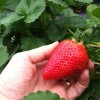 ‘Florida127’ is a new strawberry cultivar released from the University of Florida in 2013, the fruit of which are eligible for marketing under the Sensation™ brand. It is a short-day plant adapted to annual, winter plasticulture growing systems. The plant is moderately compact, robust, and upright with long pedicels, making the fruit easy to harvest. This 4-page fact sheet provides information and recommendations based on several years of testing in field plots in west-central Florida. Comparisons are made to ‘Florida Radiance’ and ‘Strawberry Festival’ for disease resistance. Written by Vance M. Whitaker, Craig K. Chandler, and Natalia A. Peres, and published by the UF Department of Horticultural Sciences, October 2014. (Photo by Vance M. Whitaker)
‘Florida127’ is a new strawberry cultivar released from the University of Florida in 2013, the fruit of which are eligible for marketing under the Sensation™ brand. It is a short-day plant adapted to annual, winter plasticulture growing systems. The plant is moderately compact, robust, and upright with long pedicels, making the fruit easy to harvest. This 4-page fact sheet provides information and recommendations based on several years of testing in field plots in west-central Florida. Comparisons are made to ‘Florida Radiance’ and ‘Strawberry Festival’ for disease resistance. Written by Vance M. Whitaker, Craig K. Chandler, and Natalia A. Peres, and published by the UF Department of Horticultural Sciences, October 2014. (Photo by Vance M. Whitaker)
http://edis.ifas.ufl.edu/hs1256
Tag: Natalia A. Peres
Florida Strawberry Producers' Experiences with Anthracose and Botrytis Fruit Rot, and Producers' Use of the Strawberry Advisory System
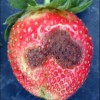 Florida’s producers use fungicides to manage anthracnose and botrytis fruit rot diseases, which find favorable growth conditions in Florida’s climate and can reduce strawberry yields and profits. The Strawberry Advisory System (SAS) uses information about weather conditions and user-entered information about past fungicide applications to evaluate the potential spread of these diseases in strawberry fields. If the risk of disease spread is low, no fungicide application is recommended, allowing producers to save on fungicide application costs. In this study, we summarize the results of a 2012/2013 survey of strawberry producers, and focus on the questions, How significant is the impact of anthracnose and botrytis on Florida strawberry producers’ yields? What are the typical fungicide application frequencies used by the producers? What percent of strawberry producers use SAS? and Are there any effects of SAS subscription on producers’ fungicide application? This 4-page fact sheet was written by Tatiana Borisova, Zhengfei Guan, Ekaterina Vorotnikova, Natalia Peres, and John VanSickle, and published by the UF Department of Food and Resource Economics, October 2014.
Florida’s producers use fungicides to manage anthracnose and botrytis fruit rot diseases, which find favorable growth conditions in Florida’s climate and can reduce strawberry yields and profits. The Strawberry Advisory System (SAS) uses information about weather conditions and user-entered information about past fungicide applications to evaluate the potential spread of these diseases in strawberry fields. If the risk of disease spread is low, no fungicide application is recommended, allowing producers to save on fungicide application costs. In this study, we summarize the results of a 2012/2013 survey of strawberry producers, and focus on the questions, How significant is the impact of anthracnose and botrytis on Florida strawberry producers’ yields? What are the typical fungicide application frequencies used by the producers? What percent of strawberry producers use SAS? and Are there any effects of SAS subscription on producers’ fungicide application? This 4-page fact sheet was written by Tatiana Borisova, Zhengfei Guan, Ekaterina Vorotnikova, Natalia Peres, and John VanSickle, and published by the UF Department of Food and Resource Economics, October 2014.
http://edis.ifas.ufl.edu/fe957
Impatiens Downy Mildew
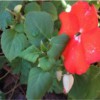 Downy mildew on impatiens is of great concern throughout Florida. Winters in south Florida provide high humidity paired with cool nights, creating ideal conditions for disease development. Downy mildews are caused by several different species of pathogens that tend to be plant-host specific. Plasmopara obducens is the pathogen that affects impatiens. Some literature indicates that nighttime temperatures of about 50 to 72°F favor downy mildew, but the disease has been reported on impatiens year round in south Florida. This 4-page fact sheet was written by L. Sanagorski, B. Schall, A.J. Palmateer, and N.A. Peres, and published by the UF Department of Plant Pathology, October 2013.
Downy mildew on impatiens is of great concern throughout Florida. Winters in south Florida provide high humidity paired with cool nights, creating ideal conditions for disease development. Downy mildews are caused by several different species of pathogens that tend to be plant-host specific. Plasmopara obducens is the pathogen that affects impatiens. Some literature indicates that nighttime temperatures of about 50 to 72°F favor downy mildew, but the disease has been reported on impatiens year round in south Florida. This 4-page fact sheet was written by L. Sanagorski, B. Schall, A.J. Palmateer, and N.A. Peres, and published by the UF Department of Plant Pathology, October 2013.
http://edis.ifas.ufl.edu/pp309
'Florida Radiance' Strawberry
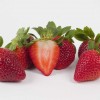 ‘Florida Radiance’ is a strawberry cultivar released from UF/IFAS in 2008. As of 2012, it has become a major cultivar in Florida and other winter and early spring production regions worldwide. In all markets outside the United States and Canada, it is marketed as ‘Florida Fortuna’. In addition to commercial production, it has been tested for many years in field plots at the UF/IFAS Gulf Coast Research and Education Center in Wimauma and the Florida Strawberry Growers Association headquarters in Dover for disease, fruit, and plant traits. This 4-page fact sheet was written by Vance M. Whitaker, Craig K. Chandler, Bielinski M. Santos, and Natalia A. Peres, and published by the UF Department of Horticultural Sciences, June 2013.
‘Florida Radiance’ is a strawberry cultivar released from UF/IFAS in 2008. As of 2012, it has become a major cultivar in Florida and other winter and early spring production regions worldwide. In all markets outside the United States and Canada, it is marketed as ‘Florida Fortuna’. In addition to commercial production, it has been tested for many years in field plots at the UF/IFAS Gulf Coast Research and Education Center in Wimauma and the Florida Strawberry Growers Association headquarters in Dover for disease, fruit, and plant traits. This 4-page fact sheet was written by Vance M. Whitaker, Craig K. Chandler, Bielinski M. Santos, and Natalia A. Peres, and published by the UF Department of Horticultural Sciences, June 2013.
http://edis.ifas.ufl.edu/hs400
Powdery Mildew of Strawberries (PP208/PP129)
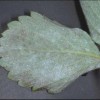 Powdery mildew occurs in most areas of the world where strawberries are grown, infecting leaves, flowers, and fruit. Infected transplants are normally the primary source of inoculum for fruiting fields in Florida, but even disease-free fields can become infected by conidia blown in from neighboring fields. Fields with susceptible cultivars should be surveyed regularly for powdery mildew, especially early in the season. Usually, controlling foliar infection helps to prevent fruit infection. This 4-page fact sheet was written by N. A. Peres and J. C. Mertely, and published by the UF Department of Plant Pathology, May 2013.
Powdery mildew occurs in most areas of the world where strawberries are grown, infecting leaves, flowers, and fruit. Infected transplants are normally the primary source of inoculum for fruiting fields in Florida, but even disease-free fields can become infected by conidia blown in from neighboring fields. Fields with susceptible cultivars should be surveyed regularly for powdery mildew, especially early in the season. Usually, controlling foliar infection helps to prevent fruit infection. This 4-page fact sheet was written by N. A. Peres and J. C. Mertely, and published by the UF Department of Plant Pathology, May 2013.
http://edis.ifas.ufl.edu/pp129
Colletotrichum Crown Rot (Anthracnose Crown Rot) of Strawberries (PP238/PP156)
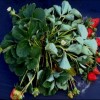 Colletotrichum crown rot is caused by the fungi Colletotrichum gloeosporioides and Colletotrichum fragariae. Both pathogens kill strawberry plants by aggressively invading crown tissue. Crown rot is a serious disease in warm production regions, such as those in the southeastern United States. This 3-page fact sheet was written by Natalia A. Peres and Steven J. MacKenzie, and published by the UF Department of Plant Pathology, September 2012.
Colletotrichum crown rot is caused by the fungi Colletotrichum gloeosporioides and Colletotrichum fragariae. Both pathogens kill strawberry plants by aggressively invading crown tissue. Crown rot is a serious disease in warm production regions, such as those in the southeastern United States. This 3-page fact sheet was written by Natalia A. Peres and Steven J. MacKenzie, and published by the UF Department of Plant Pathology, September 2012.
http://edis.ifas.ufl.edu/pp156
Anthracnose Fruit Rot of Strawberry (PP207/PP130)
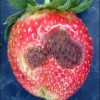 Anthracnose fruit rot is an important disease for strawberry worldwide. Lesions appear as dark, sunken spots on infected fruit. This 4-page fact sheet was written by James C. Mertely and Natalia. A. Peres, and published by the UF Department of Plant Pathology, September 2012.
Anthracnose fruit rot is an important disease for strawberry worldwide. Lesions appear as dark, sunken spots on infected fruit. This 4-page fact sheet was written by James C. Mertely and Natalia. A. Peres, and published by the UF Department of Plant Pathology, September 2012.
http://edis.ifas.ufl.edu/pp130
Mancha negra de los citricos (PP295)

Este documento es una hoja de dos páginas ilustrativas para la identificación de la mancha negra de los cítricos. This 2-page fact sheet was written by Megan M. Dewdney and Natalia A. Peres, and published by the UF Department of Plant Pathology, August 2012. http://edis.ifas.ufl.edu/pp295
Winterstar(TM) (‘FL 05-107’) Strawberry (HS1198)
 Winterstar(TM) (‘FL 05-107’) is a new strawberry cultivar released from the University of Florida in 2011, originating from a 2005 cross between ‘Florida Radiance’ and ‘Earlibrite’. Data from several years of trials were used to generate this information and recommendations to help growers obtain optimal performance in West Central Florida. This 3-page fact sheet was written by Vance M. Whitaker, Craig K. Chandler, Bielinski M. Santos, and Natalia A. Peres , and published by the UF Department of Horticultural Sciences, April 2012.
Winterstar(TM) (‘FL 05-107’) is a new strawberry cultivar released from the University of Florida in 2011, originating from a 2005 cross between ‘Florida Radiance’ and ‘Earlibrite’. Data from several years of trials were used to generate this information and recommendations to help growers obtain optimal performance in West Central Florida. This 3-page fact sheet was written by Vance M. Whitaker, Craig K. Chandler, Bielinski M. Santos, and Natalia A. Peres , and published by the UF Department of Horticultural Sciences, April 2012.
http://edis.ifas.ufl.edu/hs1198
University of Florida Strawberry Cultivars (HS1199)
 This 4-page fact sheet gives basic descriptions and suggested practices for University of Florida strawberry cultivars that are of commercial importance to the Florida strawberry industry. Descriptions are the result of research trials, field observations, and consultation with growers. They are specific to West Central Florida and may not be applicable to other regions where these cultivars are grown. Written by Vance M. Whitaker, Bielinski M. Santos, and Natalia A. Peres, and published by the UF Department of Horticultural Sciences, April 2012.
This 4-page fact sheet gives basic descriptions and suggested practices for University of Florida strawberry cultivars that are of commercial importance to the Florida strawberry industry. Descriptions are the result of research trials, field observations, and consultation with growers. They are specific to West Central Florida and may not be applicable to other regions where these cultivars are grown. Written by Vance M. Whitaker, Bielinski M. Santos, and Natalia A. Peres, and published by the UF Department of Horticultural Sciences, April 2012.
http://edis.ifas.ufl.edu/hs1199
PP279/CG088 2011 Florida Citrus Pest Management Guide: Citrus Black Spot
PP279, a 6-page fact sheet by Megan M. Dewdney, Timothy S. Schubert, Mark R. Estes, and Natalia Peres, provides citrus producers with essential information for management of this fungal disease that causes fruit blemishes and significant yield losses — regulatory considerations and recommended chemical controls. Published by the UF Department of Plant Pathology, December 2010.
http://edis.ifas.ufl.edu/cg088
HS1184 Packinghouse Citrus Black Spot ID / Identificación de la Mancha Negrade los Cítricos en las Plantas de Procesamiento
HS1184, a one-page identification sheet in English and Spanish by Mark Ritenour, Megan Dewdney, Natalia Peres, and Jamie Yates, assists packinghouse graders in the detection of citrus black spot. Published by the UF Department of Horticultural Sciences, August 2010.
http://edis.ifas.ufl.edu/hs1184
PP273 Viral Diseases of Strawberries
PP273, a 7-page illustrated fact sheet by Catalina Moyer, Vance M. Whitaker, and Natalia A. Peres, provides
basic information on viral diseases of strawberries with particular emphasis on the presence of strawberry necrotic shock virus (SNSV) on Florida strawberry plants. Includes references. Published by the UF Department of Plant Pathology, April 2010.
http://edis.ifas.ufl.edu/pp273
PP274 Citrus Black Spot
PP274, a 2-page illustrated fact sheet by Megan M. Dewdney and Natalia A. Peres, provides a visual reference for symptoms of this fungal disease affecting all commercial cultivars of citrus. Published by the UF Department of Plant Pathology, May 2010.
http://edis.ifas.ufl.edu/pp274
AE450 A Web-based Decision Support Tool for Timing Fungicide Applications in Strawberry
AE450, a 5-page illustrated fact sheet by Willingthon Pavan, Clyde W. Fraisse, and Natália A. Peres, describes a web-based tool for timing fungicide applications in strawberries that can reduce the number of sprays and cost of production, especially in years when the conditions for disease are not favorable. Includes references. Published by the UF Department of Agricultural and Biological Engineering, August 2009.
http://edis.ifas.ufl.edu/AE450
PP268 Black Spot of Rose
PP268, a 5-page illustrated fact sheet by Jozer Mangandi and Natalia A. Peres, describes this fungal disease that that affects nearly all rose cultivars worldwide — causal agent and geographic distribution, symptoms and control. Published by the UF Department of Plant Pathology, May 2009.
http://edis.ifas.ufl.edu/PP268
PP267 Cercospora Leaf Spot of Rose
PP267, a 4-page illustrated fact sheet by Jozer Mangandi and Natalia A. Peres, describes this little-investigated disease that is one of the primary foliar diseases of roses in Florida — causal agent and geographic distribution, symptoms and control. Published by the UF Department of Plant Pathology, May 2009.
http://edis.ifas.ufl.edu/PP267
PPP6/PG100 2008 Florida Plant Disease Management Guide: Chemical Control Guide for Diseases of Vegetables, Revision No. 19
Revised! PPP-6, a 108-page publication by Ken Pernezny, Amanda Gevens, Tim Momol, Aaron Palmateer, Natalia Peres, Richard Raid, Pam Roberts, Gary Vallad, and Shousan Zhang, is a guide to lawful use of sprayable chemicals intended for control of plant diseases affecting vegetables grown in Florida. Published by the UF Department of Plant Pathology, September 2008.
http://edis.ifas.ufl.edu/PG100
HS1150/HS399 ‘Florida Elyana’ Strawberry
HS-1150, a 2-page illustrated fact sheet by C.K. Chandler, B.M. Santos, and N.A. Peres, describes the performance of this short-cultivar that has shown promise in recent trials in western portions of Central Florida. Includes references. Published by the UF Department of Horticultural Sciences, December 2008.
http://edis.ifas.ufl.edu/HS399
HS1154/HS403 Growing Strawberries in the Florida Home Garden
HS-1154, a 4-page illustrated fact sheet by Craig K. Chandler, James F. Price, Natalia A. Peres, and Bielinski M. Santos, provides home gardeners with information about strawberry growing conditions and varieties for Florida, soil preparation and plant establishment, freeze protection, pest management, and harvesting and storage. It replaces HS509/VH029, Strawberries in the Florida Garden, by James M. Stephens. Published by the UF Department of Horticultural Sciences, December 2008.
http://edis.ifas.ufl.edu/HS403